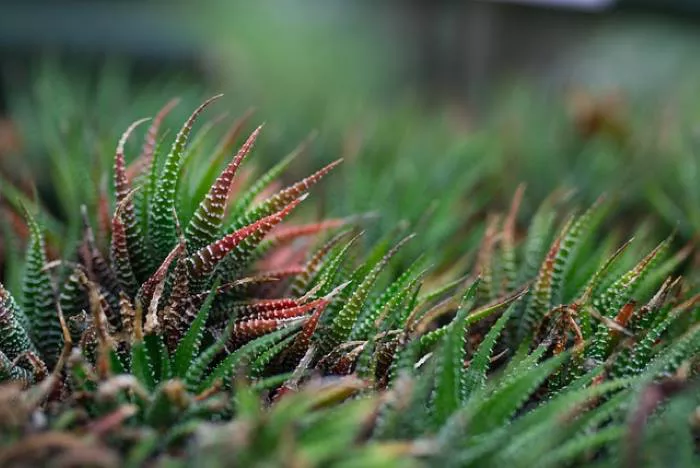Succulents are popular plants known for their unique shapes and vibrant colors. They are loved for their ability to store water in their leaves, stems, and roots. This adaptation allows them to thrive in arid conditions. However, even though succulents are drought-tolerant, they still require proper watering to grow healthy and strong. Understanding how often to water outdoor succulents is essential for their care. This article will provide a comprehensive guide on watering outdoor succulents, including factors that influence watering frequency, signs of overwatering and underwatering, and best practices for maintaining these resilient plants.
Understanding Succulent Needs
Succulents are native to dry regions around the world. They have evolved to survive in environments with limited water availability. This unique adaptation allows them to store water and survive long periods without rainfall. Despite their drought-tolerant nature, succulents still need water to thrive. The key is to find the right balance. Overwatering can lead to root rot, while underwatering can cause the plant to shrivel and die.
Watering frequency for outdoor succulents depends on several factors, including climate, soil type, potting method, and the specific type of succulent. It is essential to understand these factors to provide the best care for your plants.
Factors Influencing Watering Frequency
Climate plays a significant role in determining how often you should water outdoor succulents. In hot, dry climates, succulents may require more frequent watering, while in cooler, humid climates, they may need less. During the summer months, when temperatures rise, succulents will typically need more water. Conversely, during the winter months, when temperatures drop, succulents enter a dormant phase and require less water.
Soil type is another critical factor. Succulents thrive in well-draining soil that prevents excess moisture from accumulating around the roots. If your succulents are planted in sandy or gritty soil, they will dry out more quickly and may need more frequent watering. On the other hand, if they are in heavy, clay-like soil, they will retain moisture longer and require less frequent watering.
The potting method also affects watering frequency. If your succulents are in pots, make sure they have drainage holes. This allows excess water to escape and prevents root rot. Pots made of porous materials, such as terracotta, can help wick moisture away from the soil, leading to quicker drying times. In contrast, plastic pots may retain moisture longer, requiring less frequent watering.
Different types of succulents have varying water needs. For example, some varieties, like jade plants and aloe vera, can tolerate more moisture, while others, like sedums and echeverias, prefer drier conditions. Knowing the specific needs of your succulents can help you determine the appropriate watering schedule.
General Watering Guidelines
As a general rule, outdoor succulents should be watered every two to three weeks during the growing season, which typically runs from spring to fall. However, it is essential to adjust this guideline based on the factors discussed earlier. Always check the soil moisture before watering. Stick your finger about an inch into the soil. If it feels dry, it is time to water. If it still feels moist, wait a few more days before checking again.
When watering succulents, it is crucial to water deeply but infrequently. This means allowing water to soak through the soil until it drains out of the bottom of the pot or the ground. Deep watering encourages the roots to grow deeper into the soil, making the plants more resilient to drought. Avoid shallow watering, as it can lead to weak root systems and increased susceptibility to stress.
Signs of Overwatering and Underwatering
Recognizing the signs of overwatering and underwatering is essential for maintaining healthy outdoor succulents. Overwatered succulents often exhibit yellowing leaves, mushy or squishy stems, and a general decline in vigor. The roots may also rot, leading to a foul smell coming from the soil. If you notice these symptoms, reduce the frequency of watering and allow the soil to dry out completely before watering again.
On the other hand, underwatered succulents typically show signs of shriveling or wilting. The leaves may appear wrinkled or shriveled, and the plant may look generally lifeless. If you suspect your succulents are underwatered, give them a thorough watering, allowing the soil to absorb moisture. Monitor the plant closely to ensure it recovers.
Best Practices for Watering Outdoor Succulents
To ensure the health and longevity of your outdoor succulents, consider the following best practices for watering:
Water in the Morning: Watering in the morning allows the plants to absorb moisture before the heat of the day. This practice helps prevent evaporation and allows the soil to dry out before nighttime, reducing the risk of fungal issues.
Use the Right Soil: Choose a well-draining soil mix specifically designed for succulents and cacti. This type of soil typically contains sand, perlite, or grit to enhance drainage.
Monitor Weather Conditions: Pay attention to weather changes. If there has been significant rainfall, you may need to skip watering for a while. Conversely, during hot, dry spells, you may need to water more frequently.
Adjust for Seasons: As mentioned earlier, succulents require less water in the winter months. During this dormant period, reduce your watering frequency to prevent overwatering.
Observe Your Plants: Regularly check your succulents for signs of stress. Adjust your watering schedule based on their appearance and the conditions they are growing in.
Conclusion
Watering outdoor succulents requires careful consideration of various factors, including climate, soil type, potting method, and the specific needs of the plants. While a general guideline of watering every two to three weeks can be helpful, it is crucial to assess the soil moisture and adjust your watering schedule accordingly. By understanding the signs of overwatering and underwatering, you can provide the best care for your succulents. Following best practices for watering will help ensure that your outdoor succulents remain healthy, vibrant, and resilient. With proper care, your succulents will thrive and enhance the beauty of your outdoor space.


